Koya-san is the centre of Shingon Buddhism which was introduced in 805 by the monk Kukai (空海) (Kobo Daishi, 弘法大師) and Koya-san was first settled in 819. Koya-san is also a UNESCO World Heritage Site under the name of the "Sacred Sites and Pilgrimage Routes in the Kii Mountain Range".
The main gate of Koya-san, the traditional entrance to Koya-san before the advent of modern transportation means.

Koya-san is roughly 80 km south of Osaka and it took around 90 minutes by train and cable car to get there from Namba station in Osaka.
View 2012-01-01 Koya-san/Mount Koya in a larger map
Like all other temples, there are admission fees to pay for maintenance and others. Luckily you can buy a combination ticket that Nankai Railway sells that basically covers all the tourist attractions that you are expected to visit.

Koya-san is located in quite a mountainous area in Wakayama Prefecture, quite a change of pace from the urban sprawl of Osaka. For the final stretch of the journey to Koya-san, you had to switch from the train to taking a cable car.
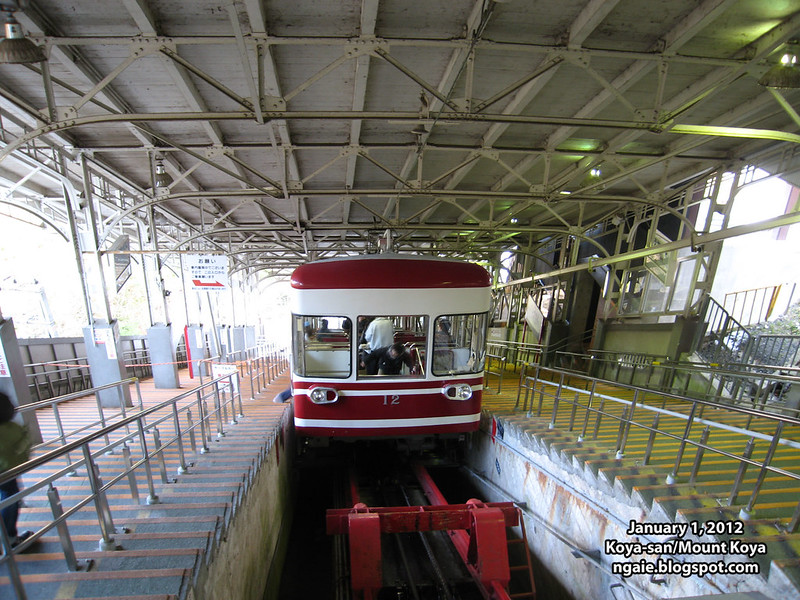
At the Koya-san cable car station. Once I arrived at the station I thought I had arrived at the Koya-san town. It turns out that I had to transfer and take another bus that made its way through windy mountain roads to actually reach the town.
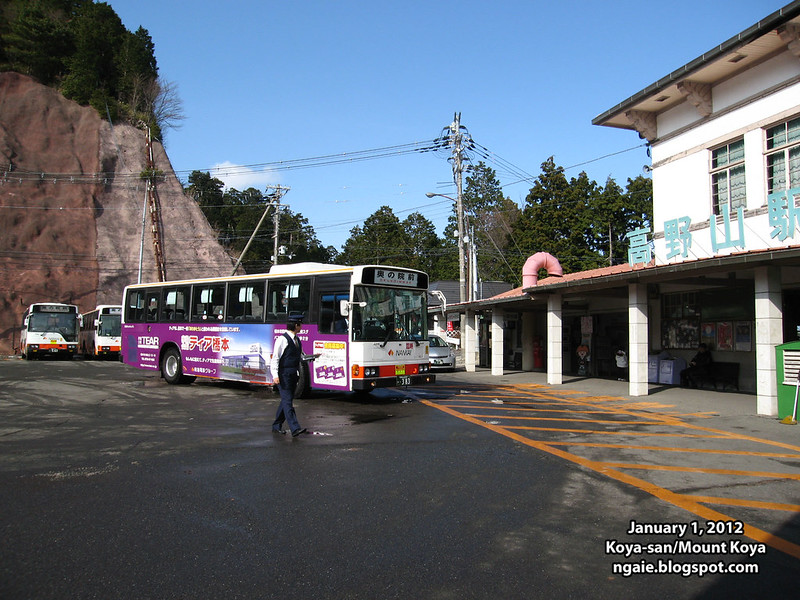
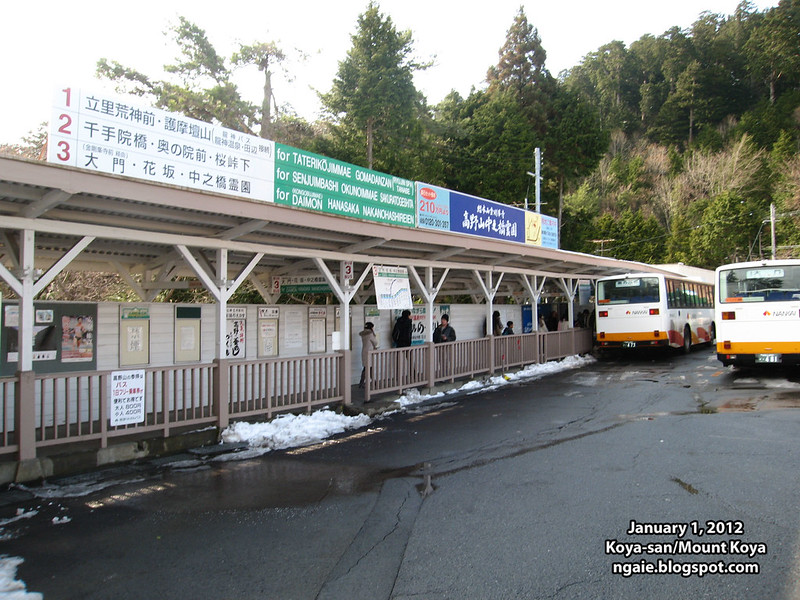
The Koya-san temple town. Because it was New Years, it was almost completely deserted. By the time I arrived, it was already lunch time and I had to search for a restaurant that was open. After eating some soba, I walked around the town. What was interesting is that there were no traces of shops and restaurants like convenience stores that are ubiquitous in modern Japan.
Quite a peaceful environment!
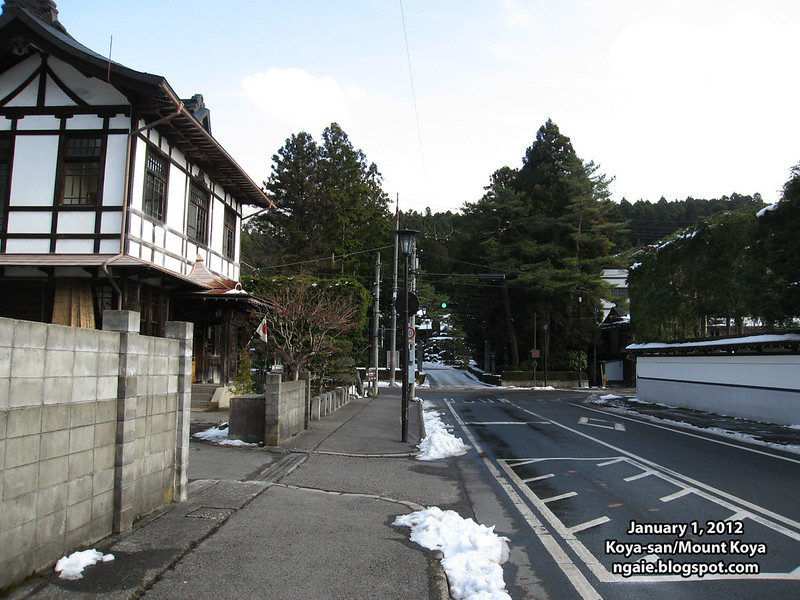

Being the temple town that Koya-san is, there were lots of temples sandwiched between buildings in the town centre.
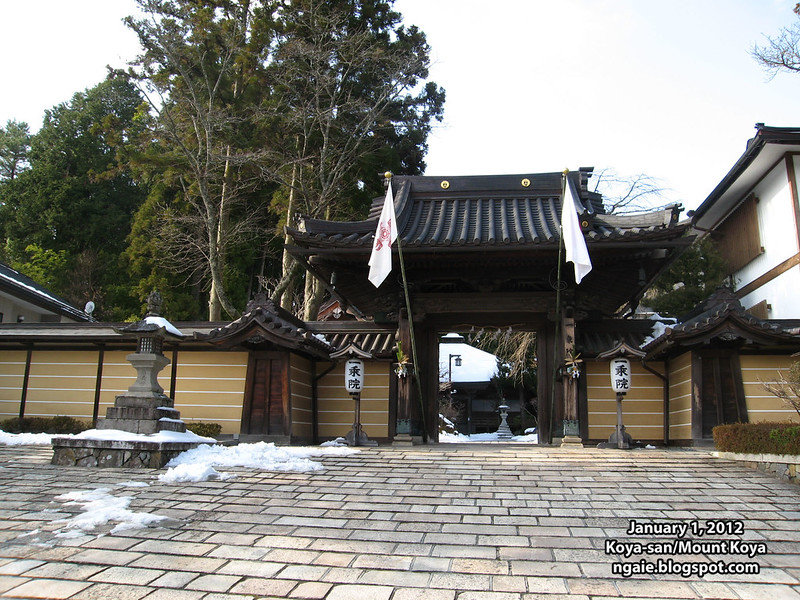
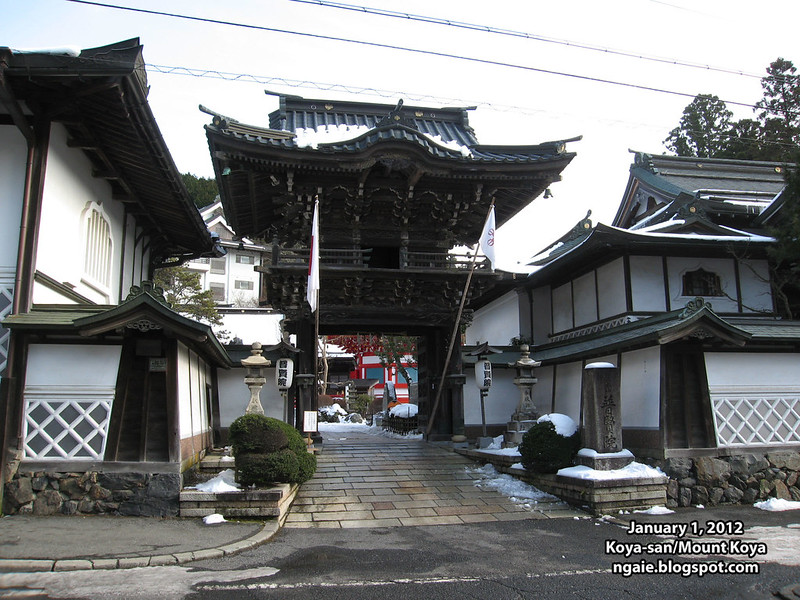
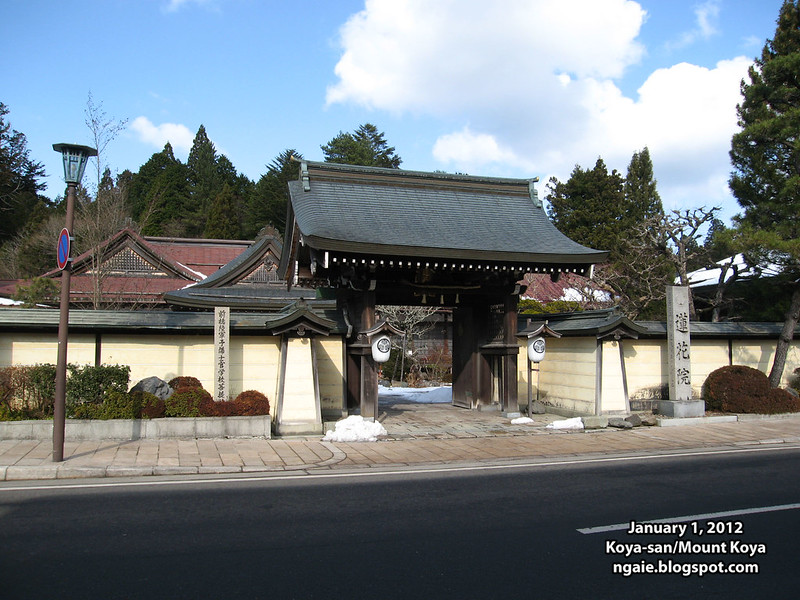
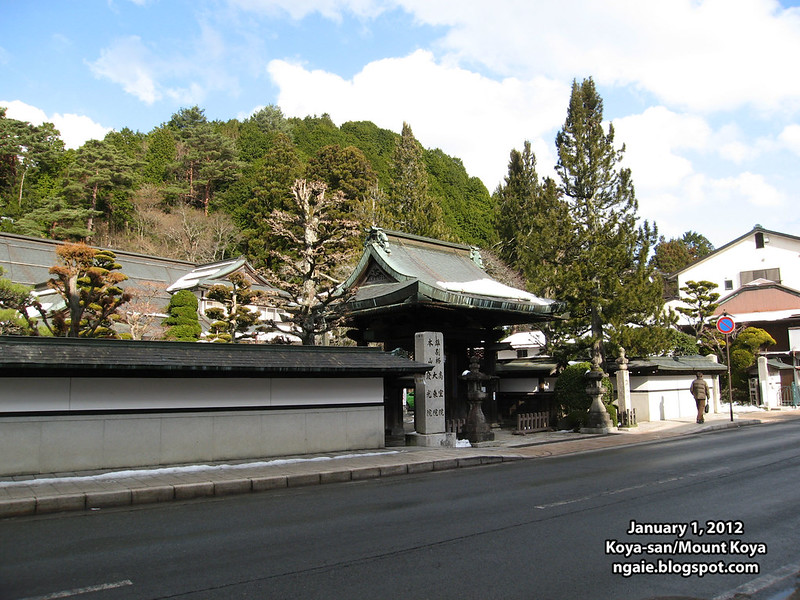
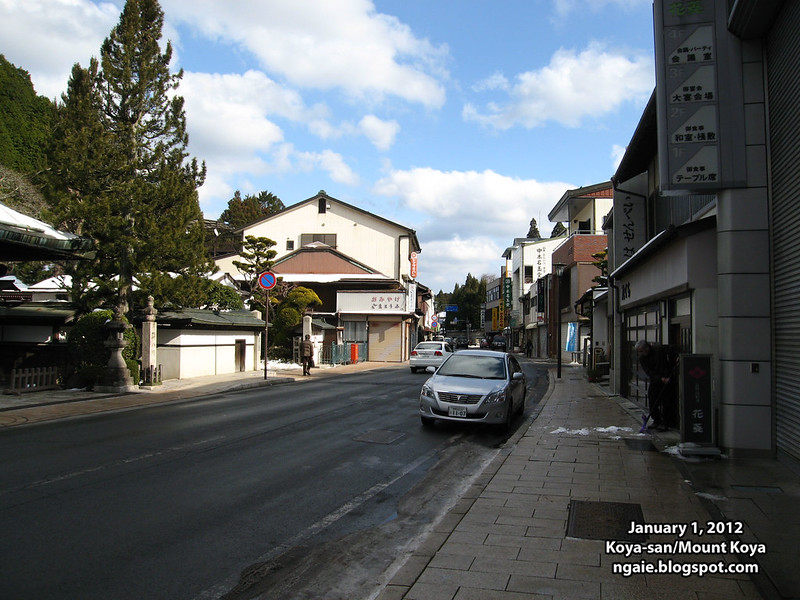
Who says no one drives SUVs in Japan?

The first tourist attraction to was walk to the Okunoin Temple (奥の院) which is the mausoleum of the monk Kukai, the founder of Shingon Buddhism.
The path to the Okunoin Temple.
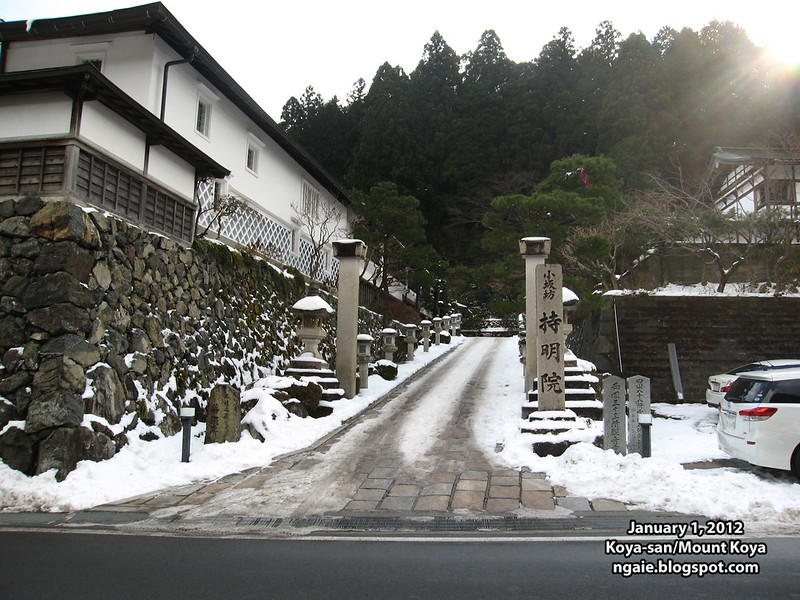
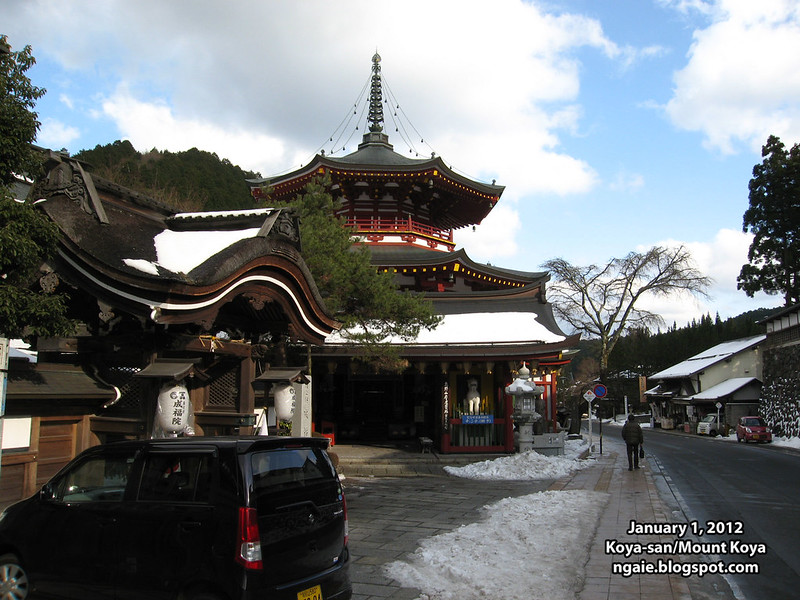
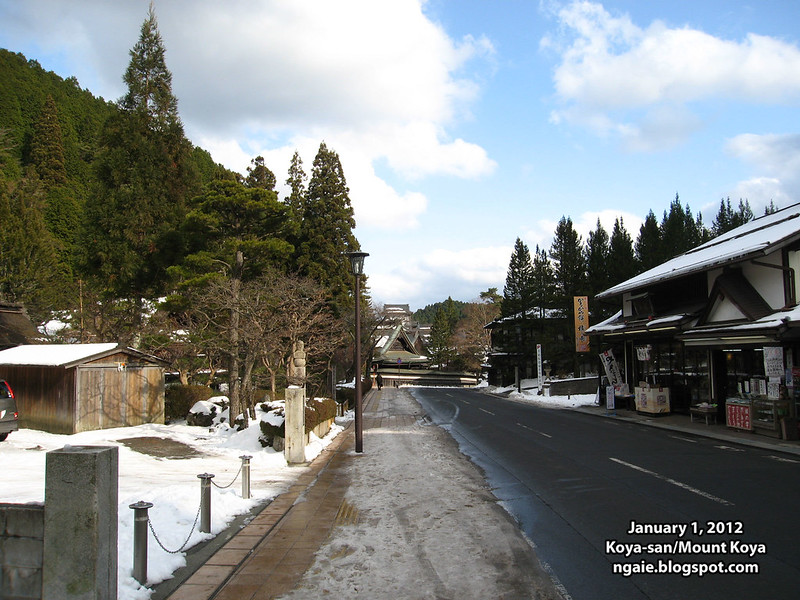
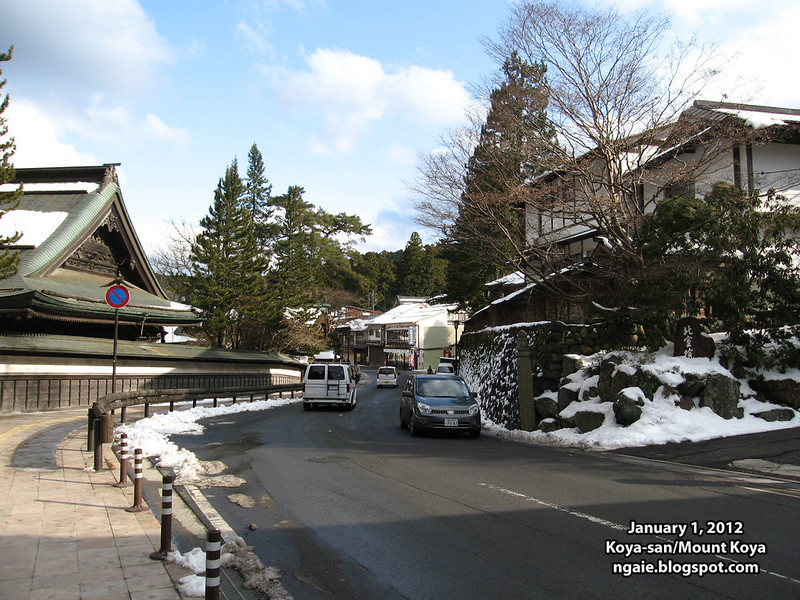
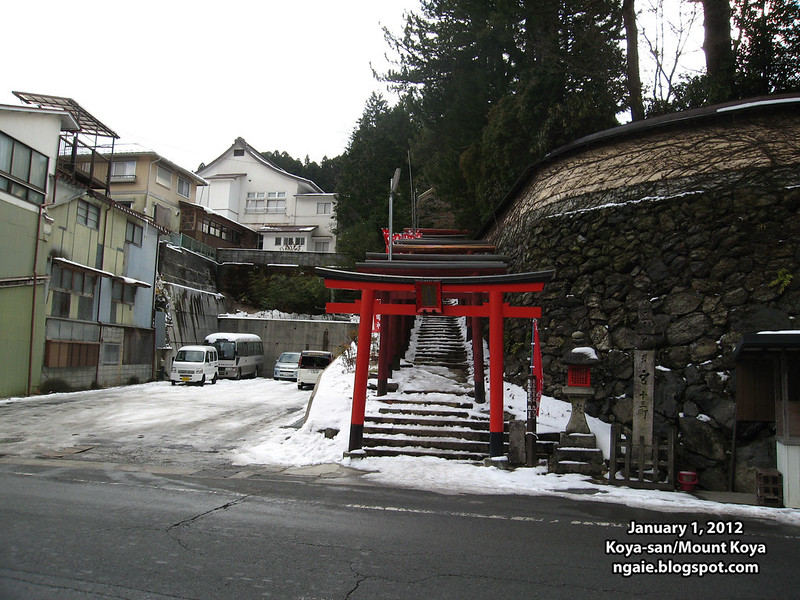
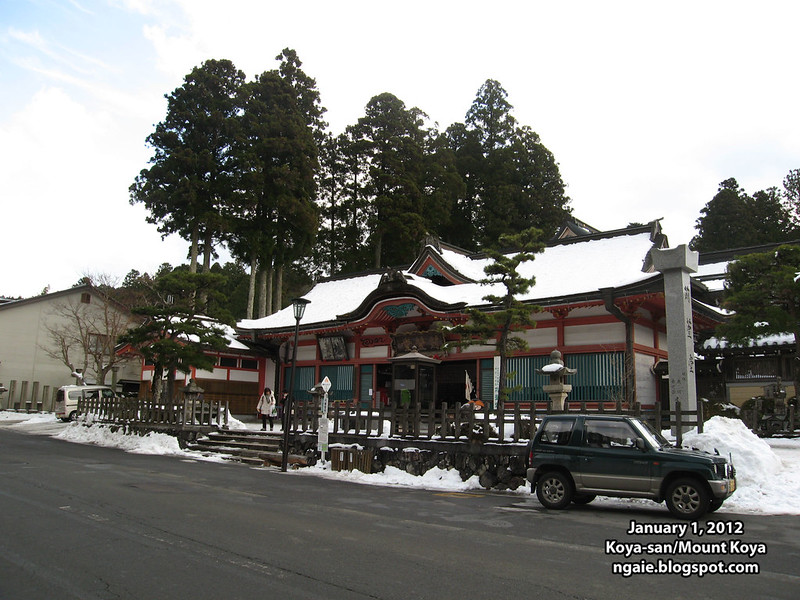
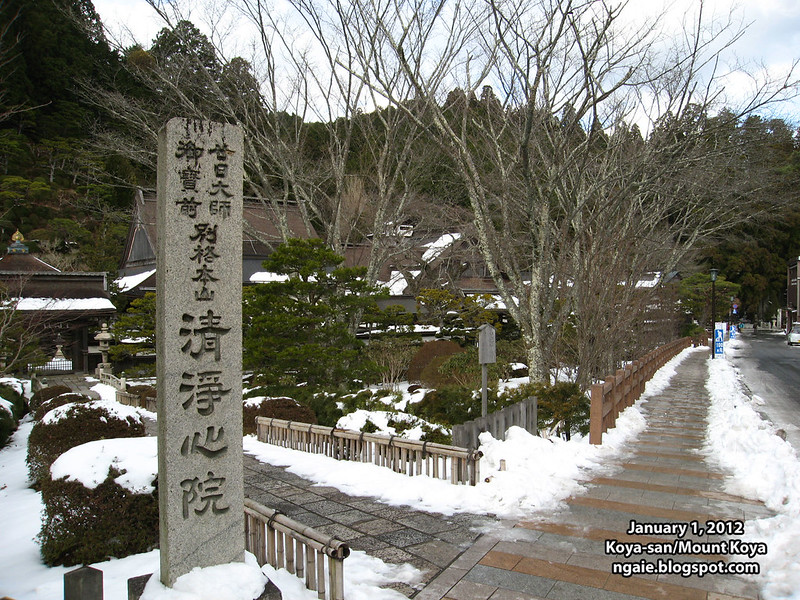
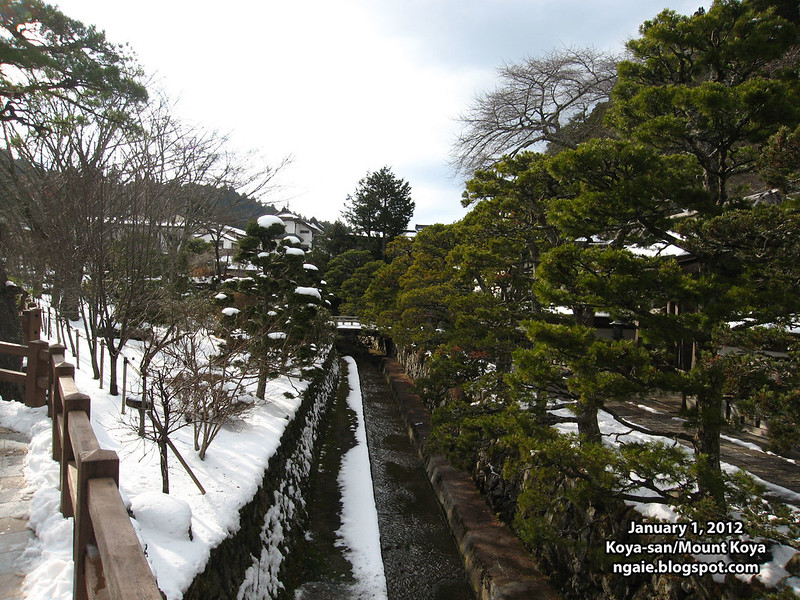
At the entrance to the Okunoin Temple complex. After crossing the first bridge, there was a 2 km path to the monk Kukai's mausoleum. The path goes through the largest cemetery in Japan. Over 200,000 tombstones line the 2 km path to the mausoleum.
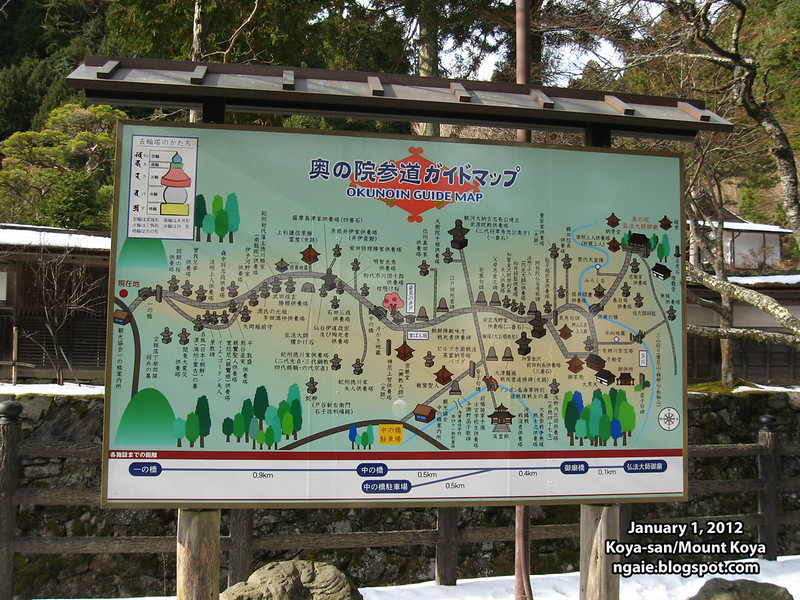
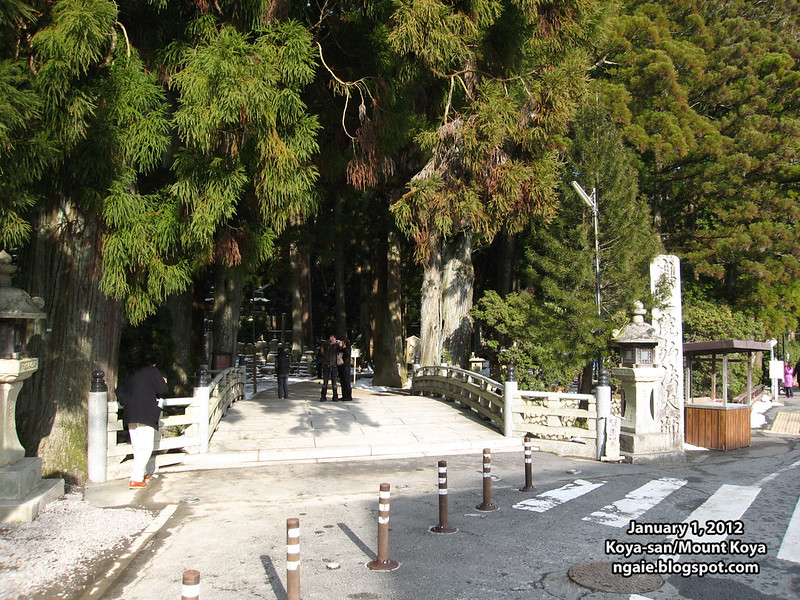
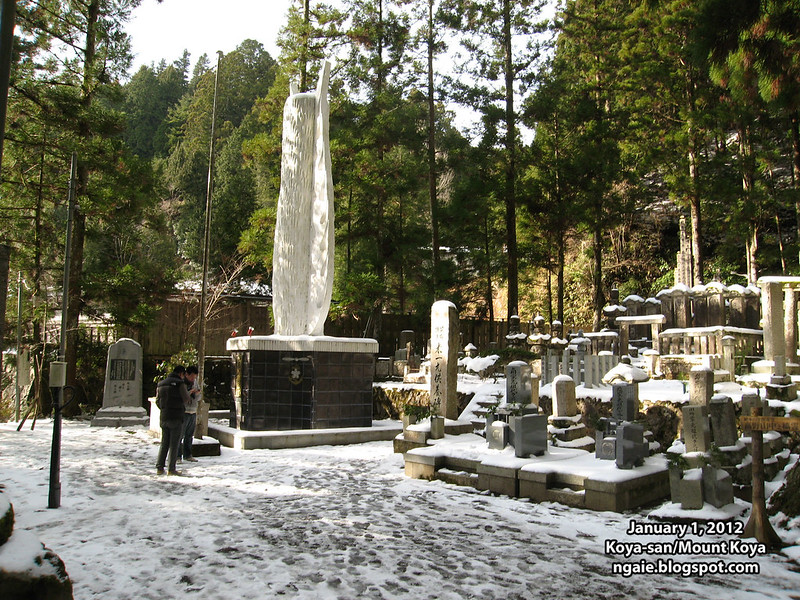
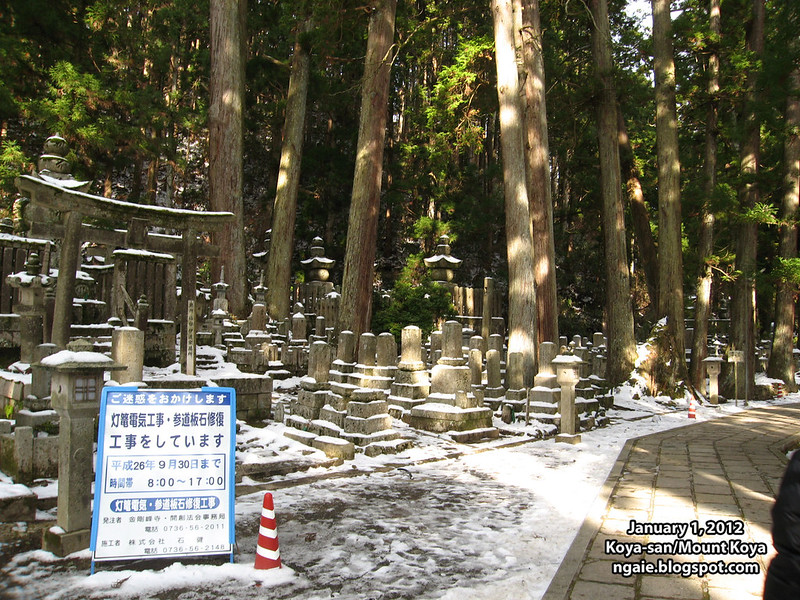
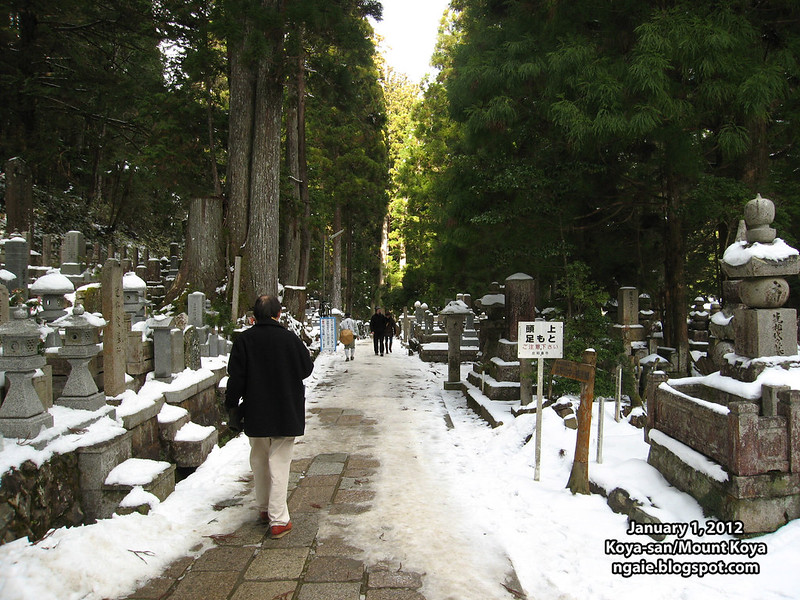
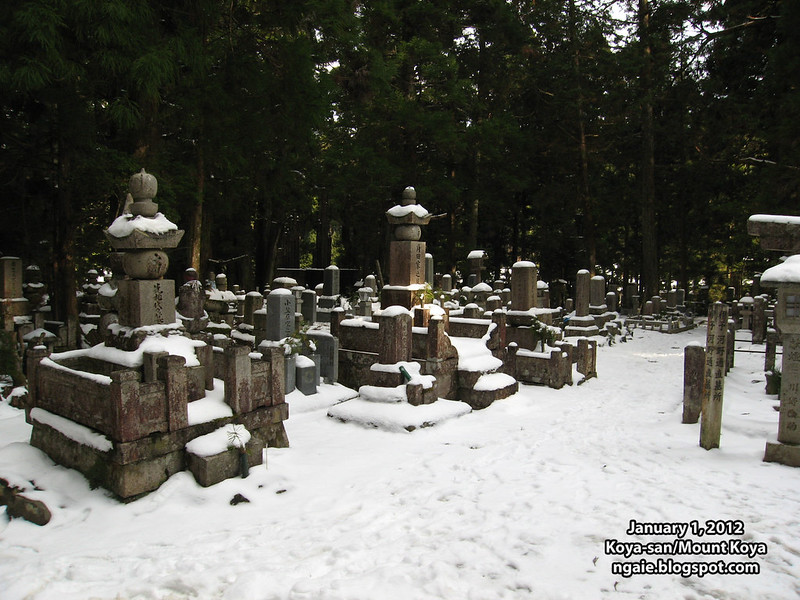
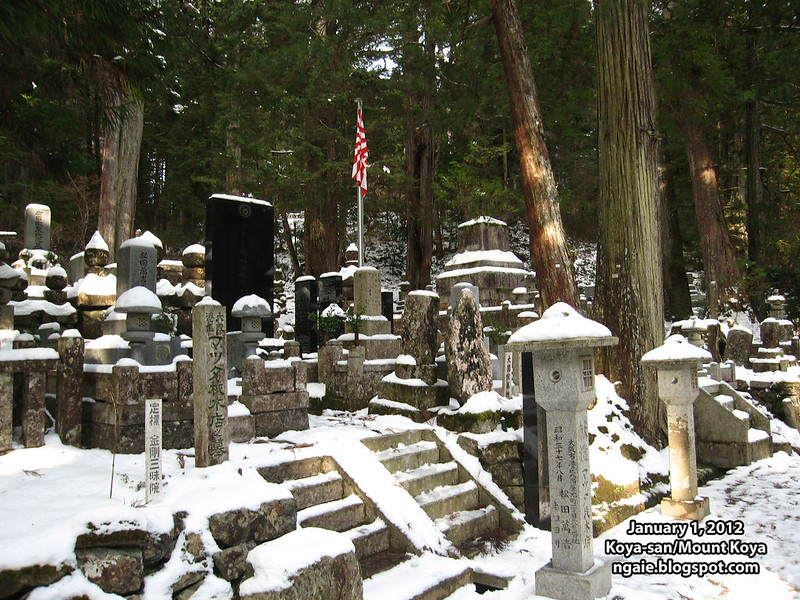
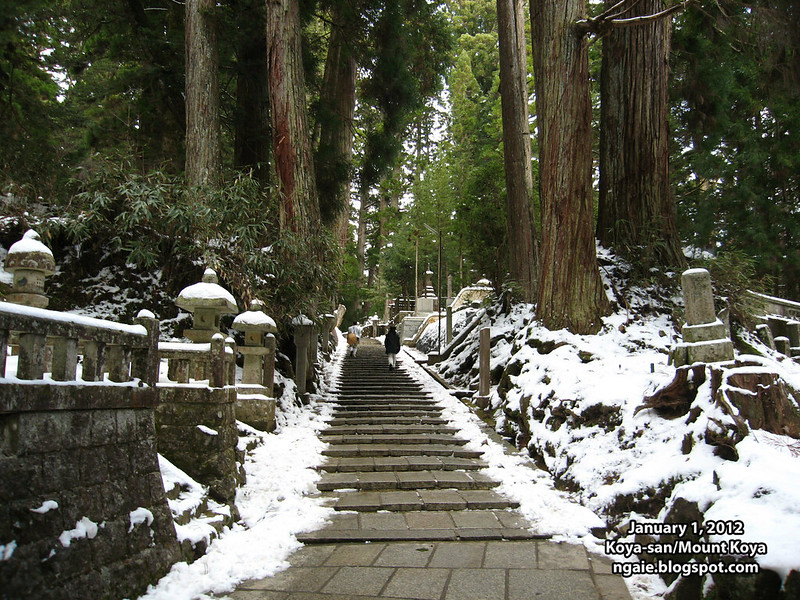
What was interesting is that in addition to personal tombstones there were also memorials from companies and organizations.
Here is one from Panasonic.
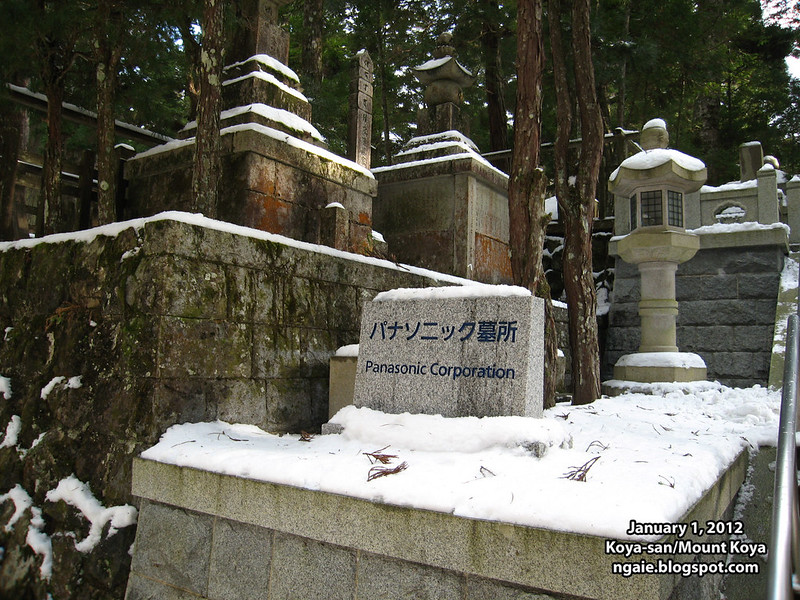
The fire department.
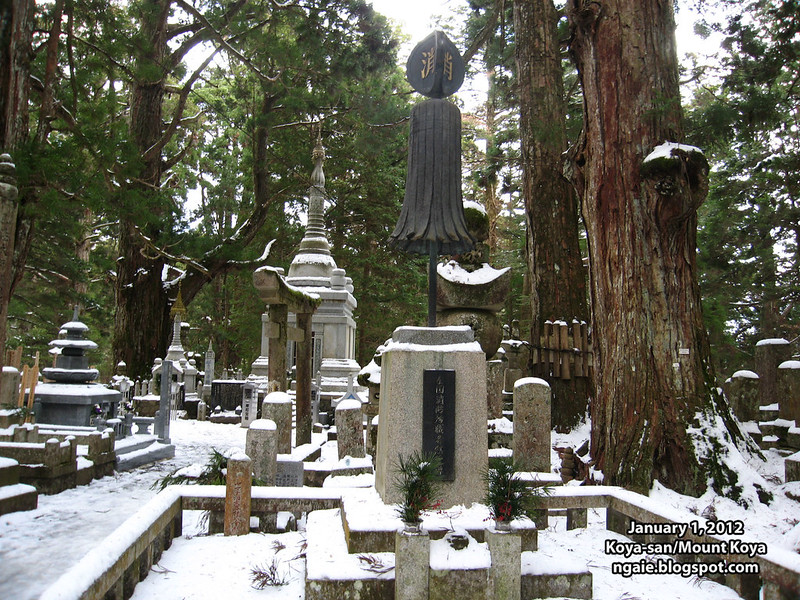
After a long walk over the icy stone path, I finally reached the main temple of Okunoin and the monk Kukai's mausoleum.
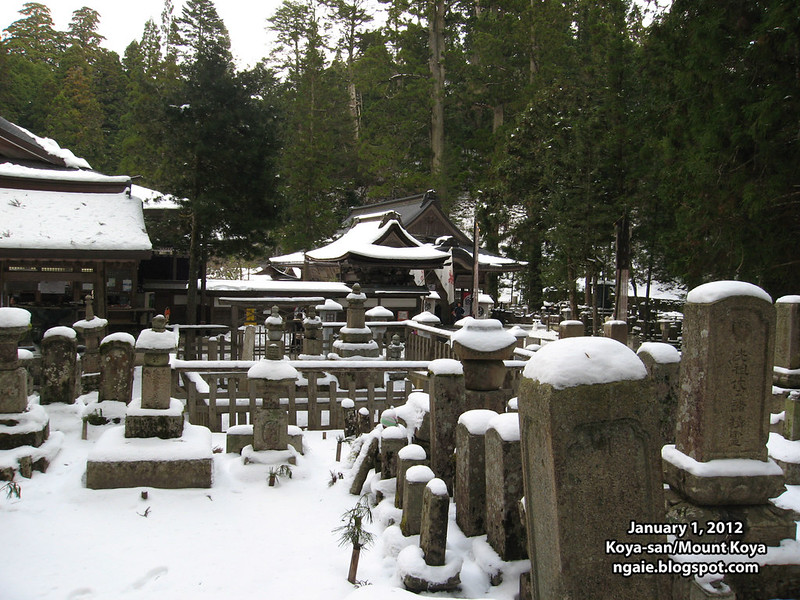
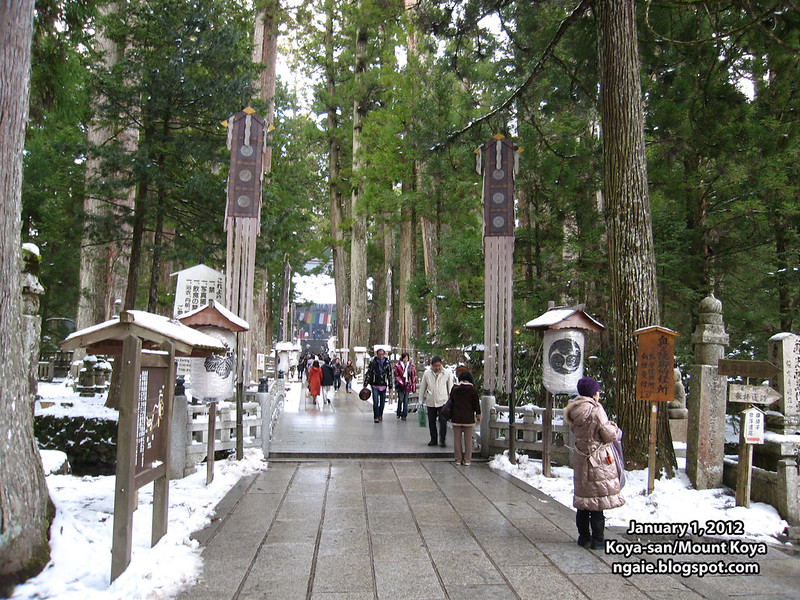
Visitors praying for departed family members at the the statues, known as Mizumuke Jizo (Water Covered Jizo).

A group of wooden markers placed in the stream as a memorial to unborn children.
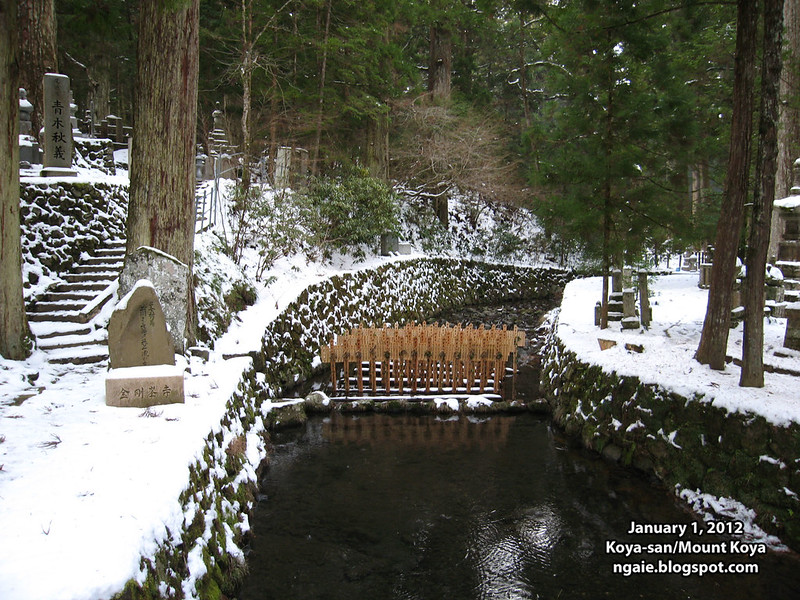
The main temple complex and mausoleum. You were not supposed to take any pictures here and initially I didn't...until I noticed that no one else was following the rules.
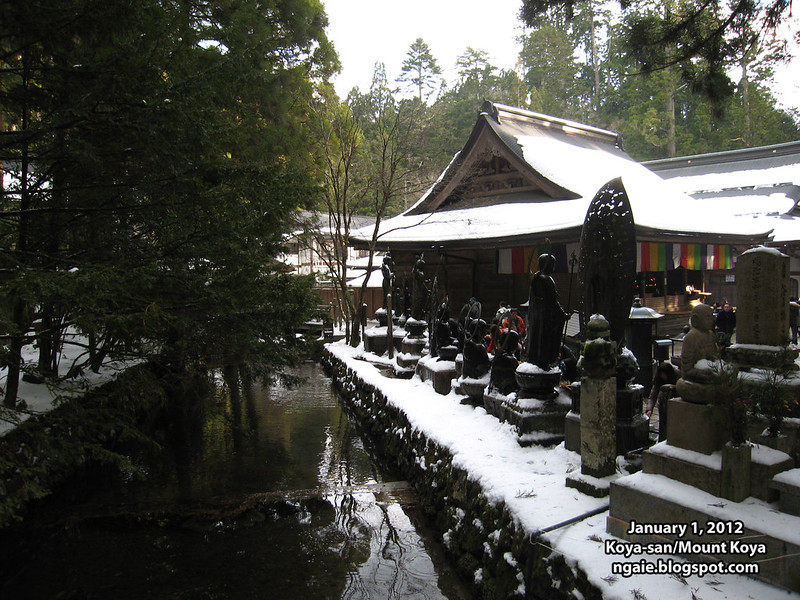
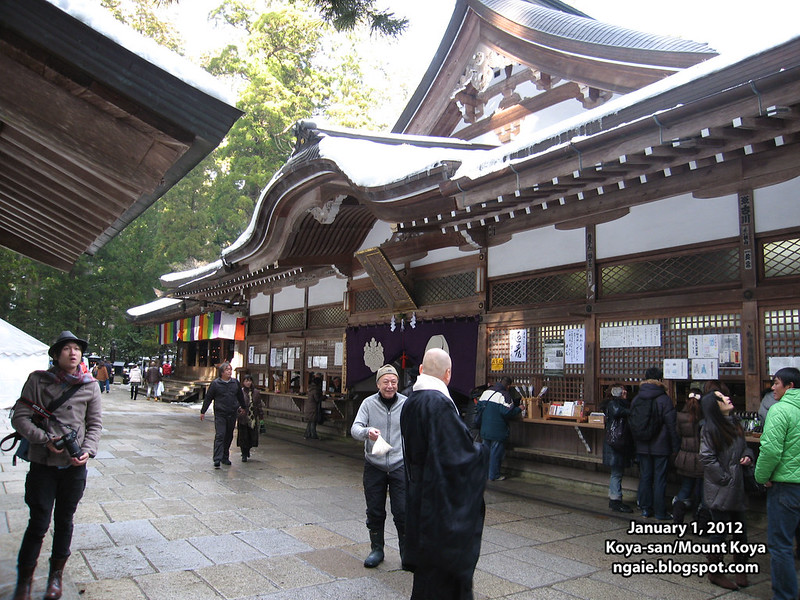
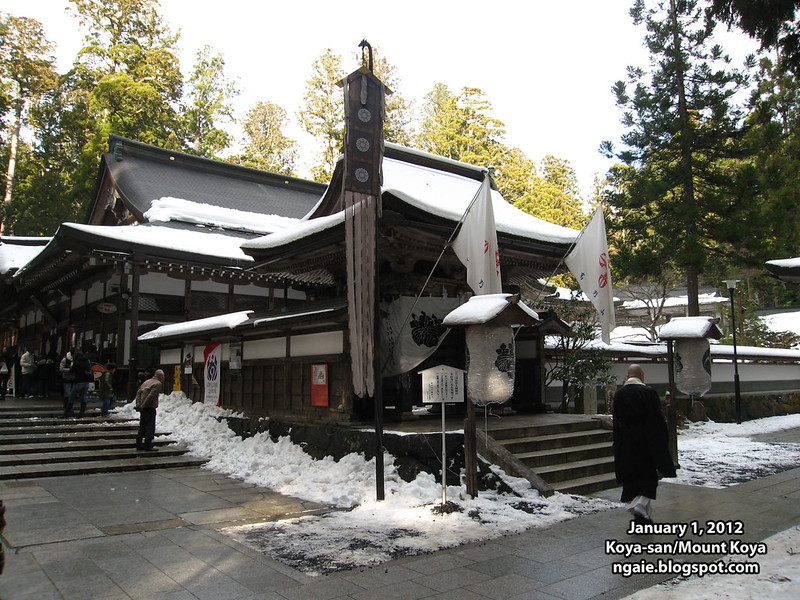
On the path exiting the main temple complex was a newer area of the cemetery. It seemed that this area was dominated by memorials by corporations.
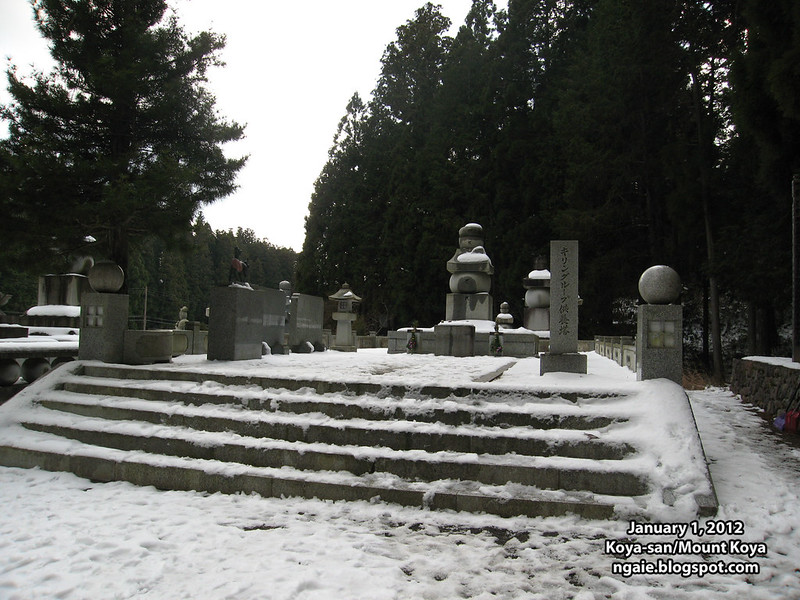
This one is by UCC Coffee.
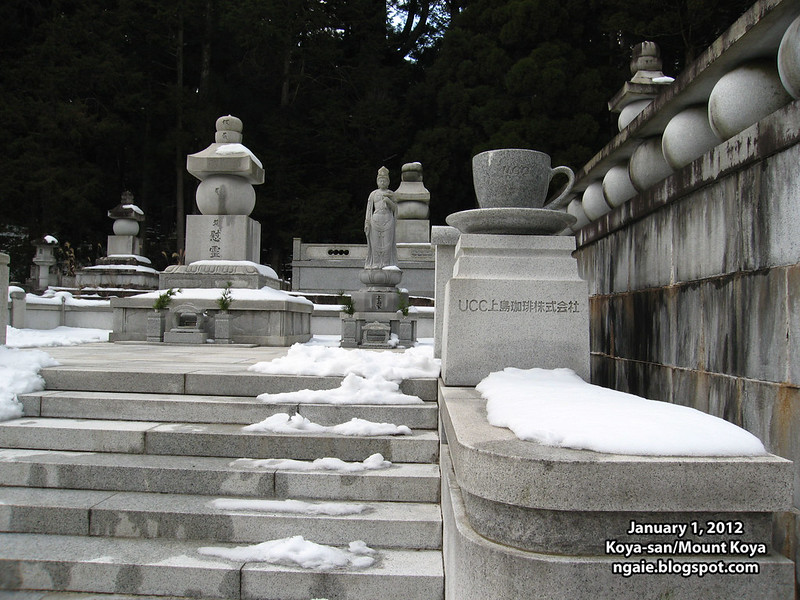
Nissan's memorial.
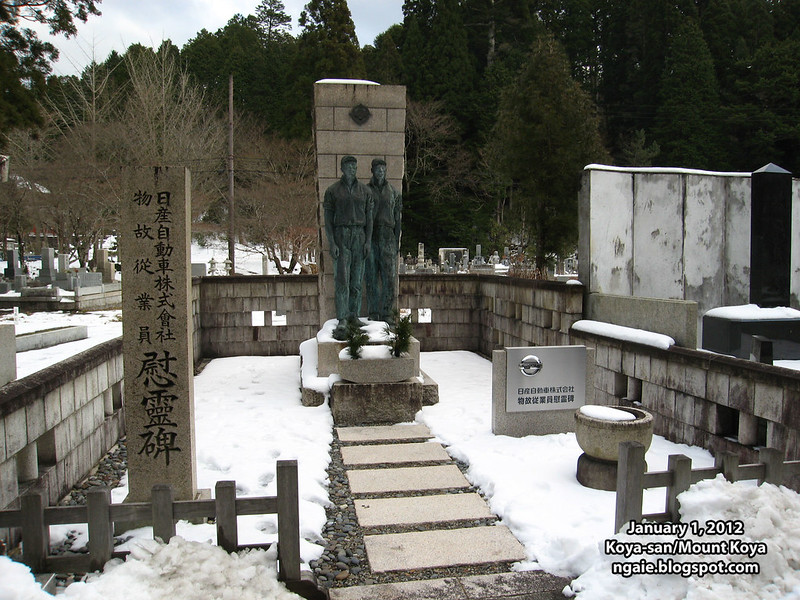
The yogurt drink maker Yakult's memorial.
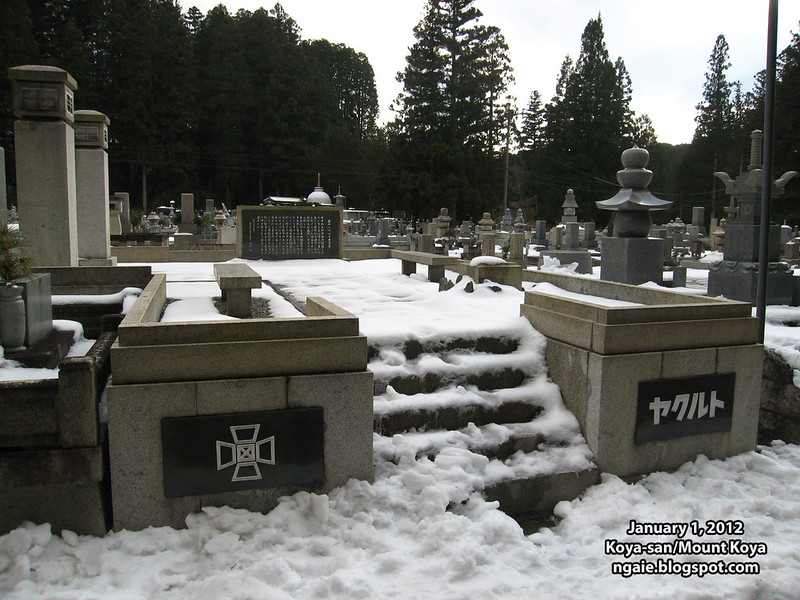
This company even had one of their products installed at its memorial.
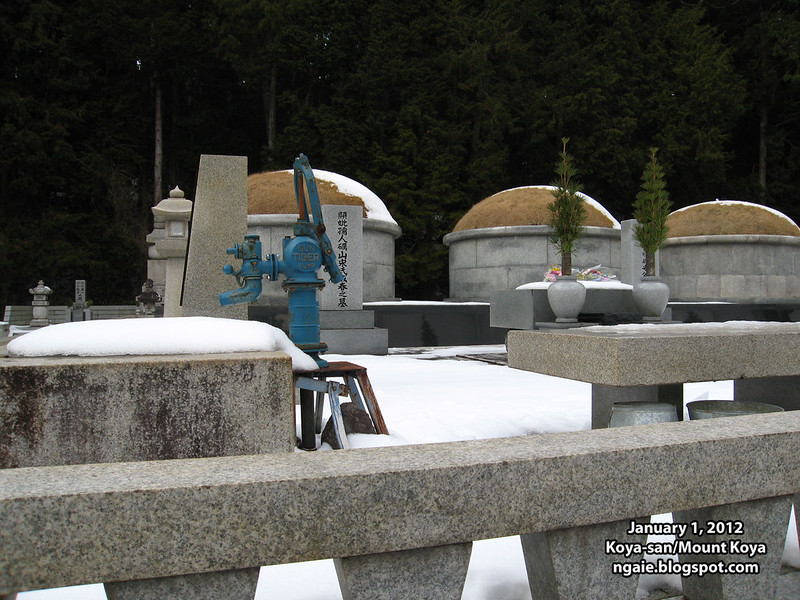
The memorial for ShinMaywa Industries, a Japanese industrial conglomerate descended from the Kawanishi Aircraft Company.
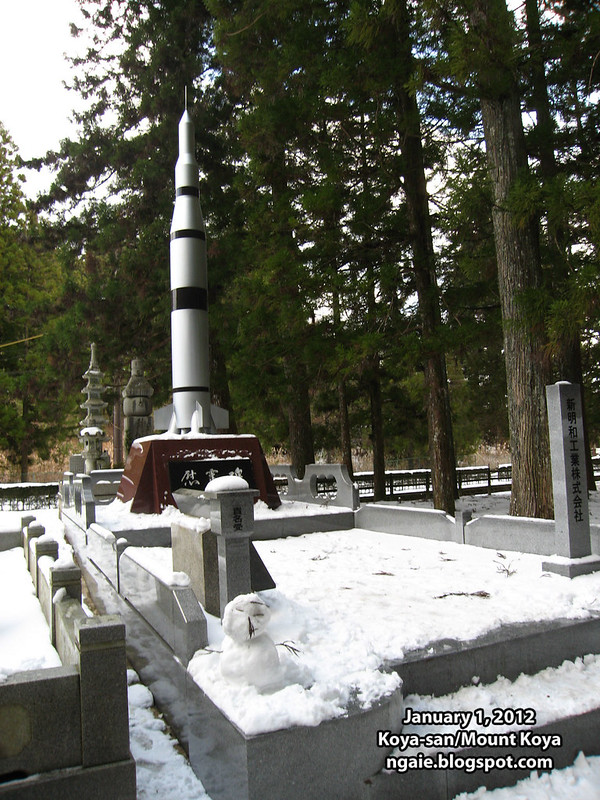
At the other side of the Okunoin complex was a giant parking lot. This is where most of the tourists to Okunoin come from. If they parked their cars on this side, they did not have to make the long trek from the traditional entrance of Okunoin from Koya-san town.
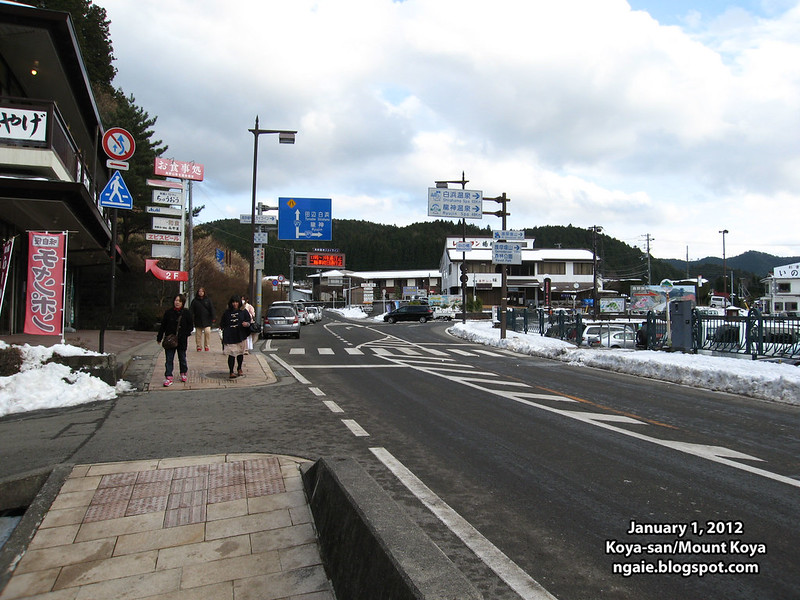
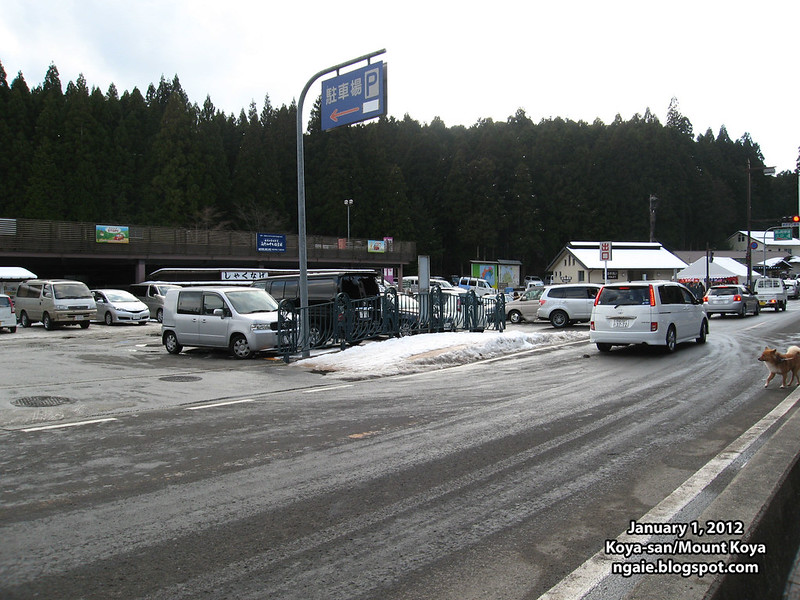
I thought that this kind of convenience of catering to cars kind of wrecks the atmosphere of the place.
The entrance for the much shorter path to main Okunoin temple and mausoleum.
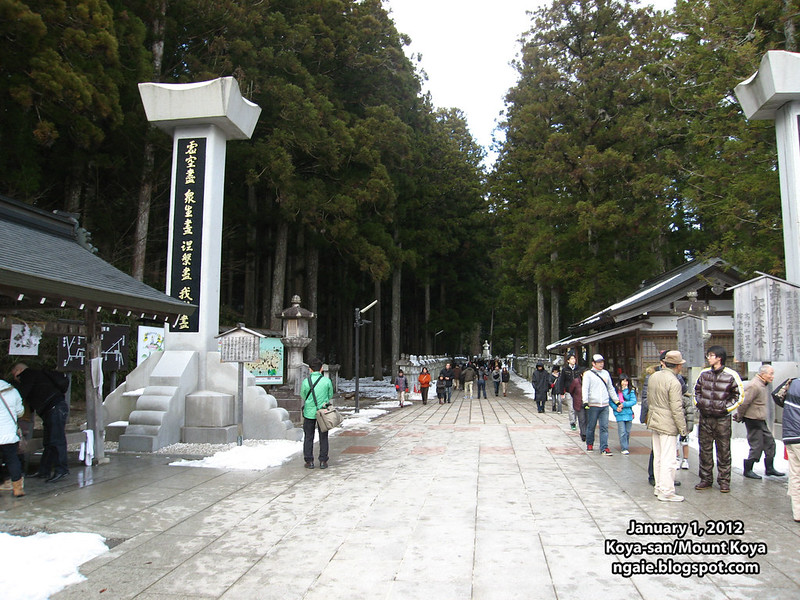
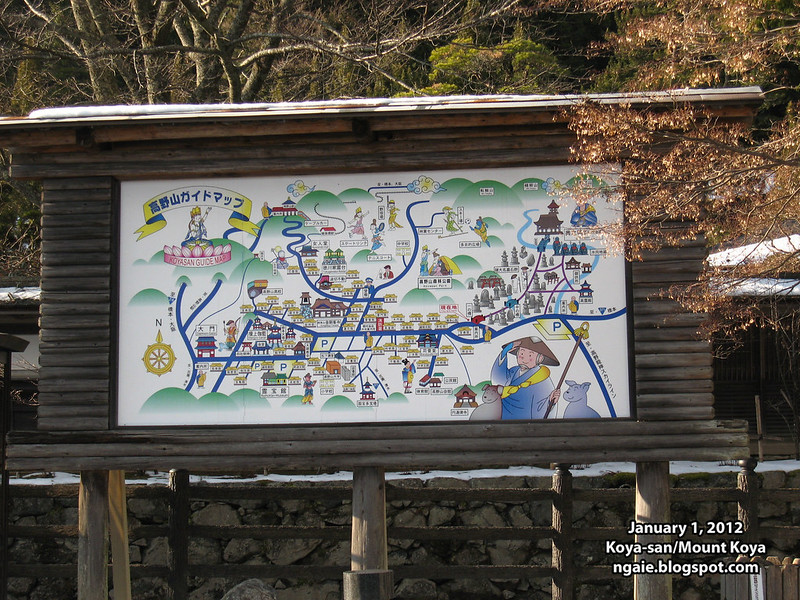
After that, I trekked back to the main town on the perimeter of the Okunoin cemetery. By this time, the sun had finally come out.
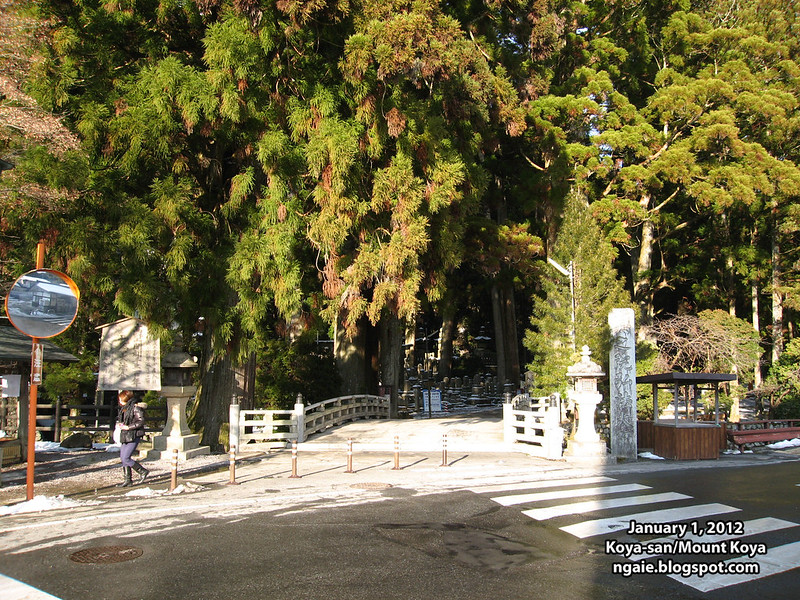
I walked around and visited some temples that were included in my combination ticket that I bought from Nankai Railway.

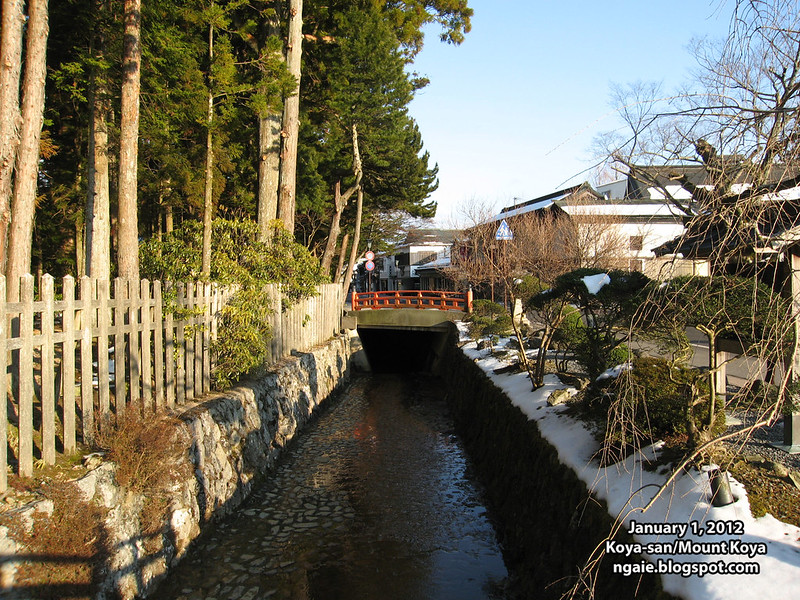
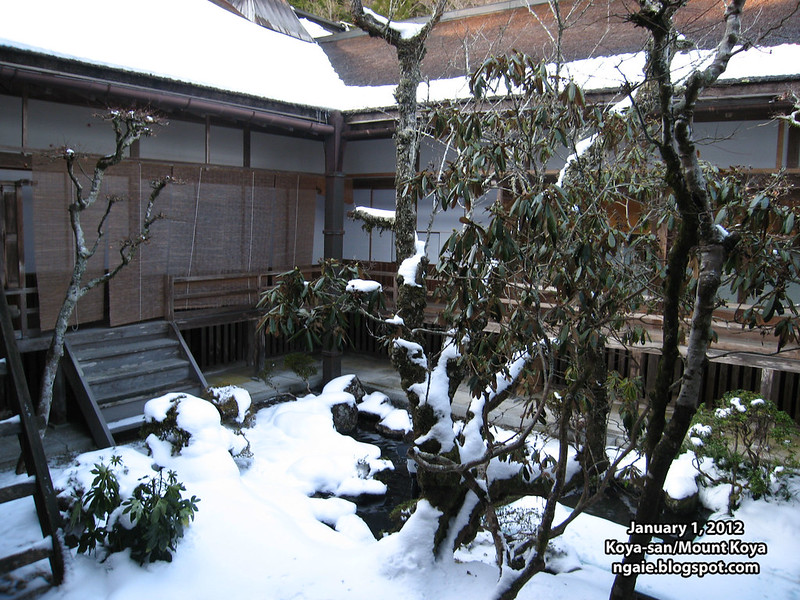


The Danjo Garan (壇場伽藍), Koya-san's main temple complex.
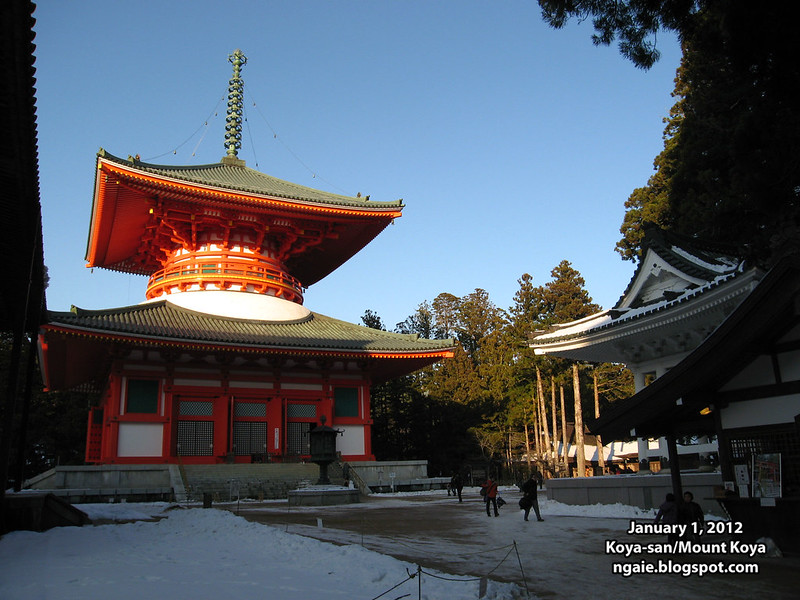
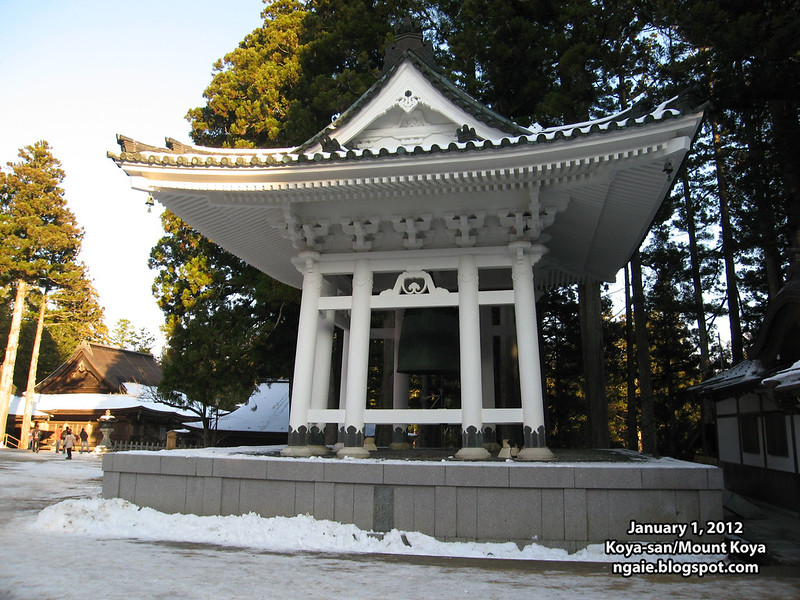
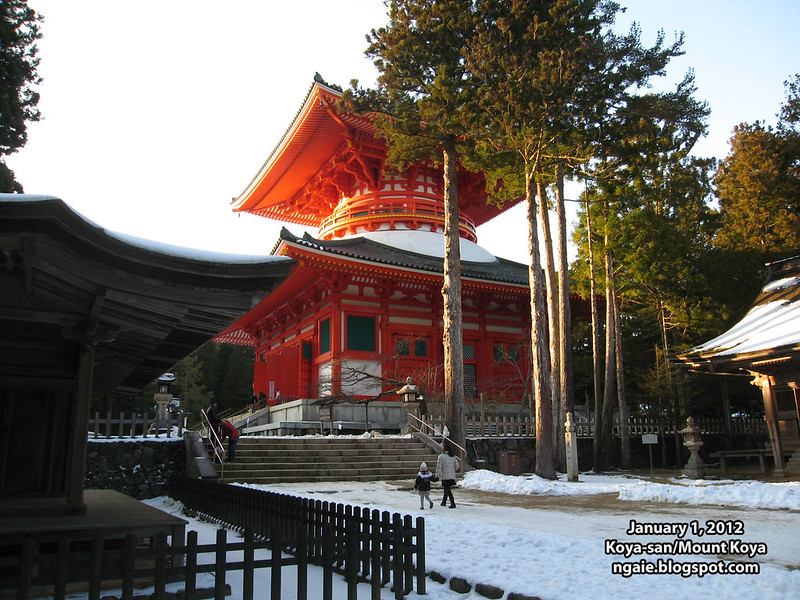
The last place I visited in Koya-san was the main gate. Which in traditional times, would be the first place a visitor to Koya-san would see!

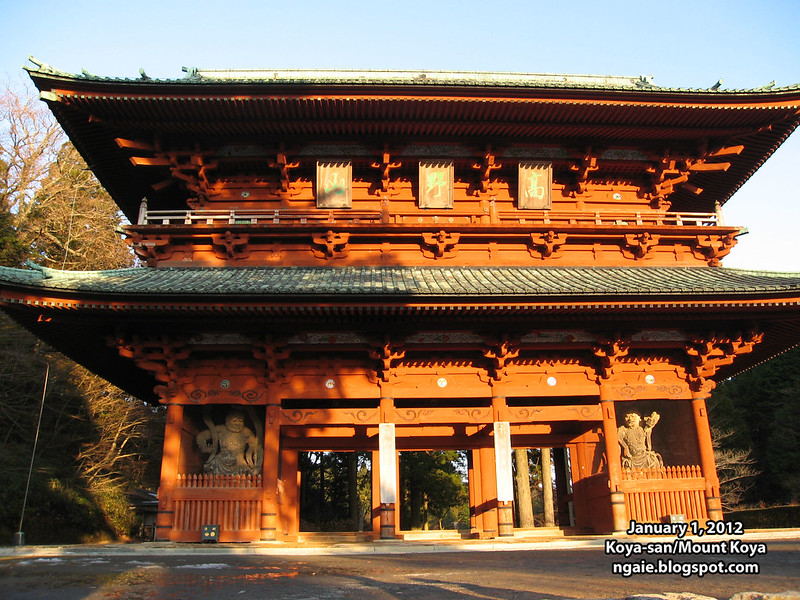
After coming back to Osaka, instead of resting after all that walking, since my hotel was near the newly renovated Osaka station, I decided to walk around and check out the station. I think in Japan now, Osaka has one of the best railway stations in the country.
The main feature of the new Osaka station is its spaciousness. Something that you definitely don't see in any of the stations in Tokyo.
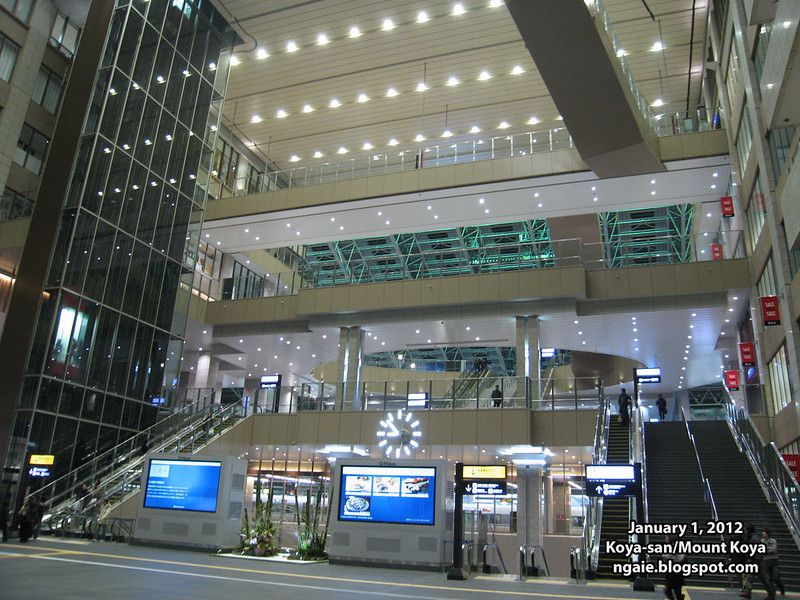
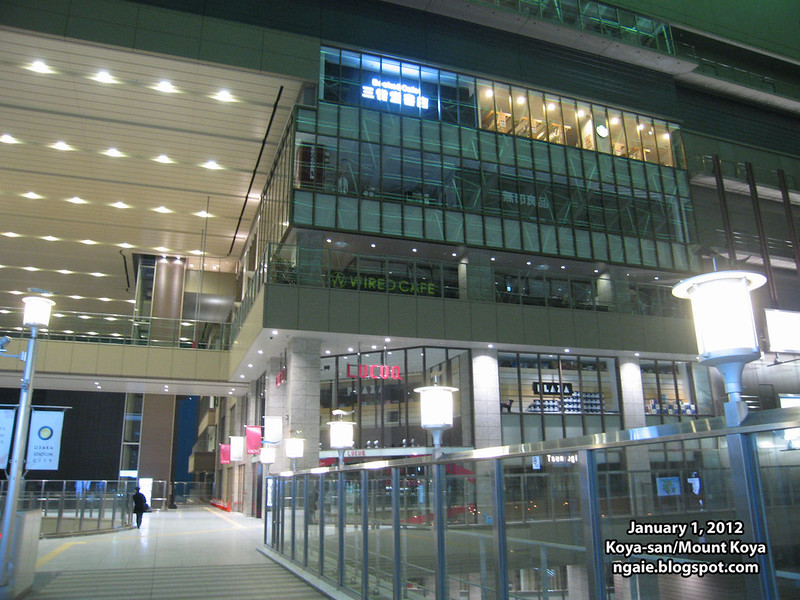
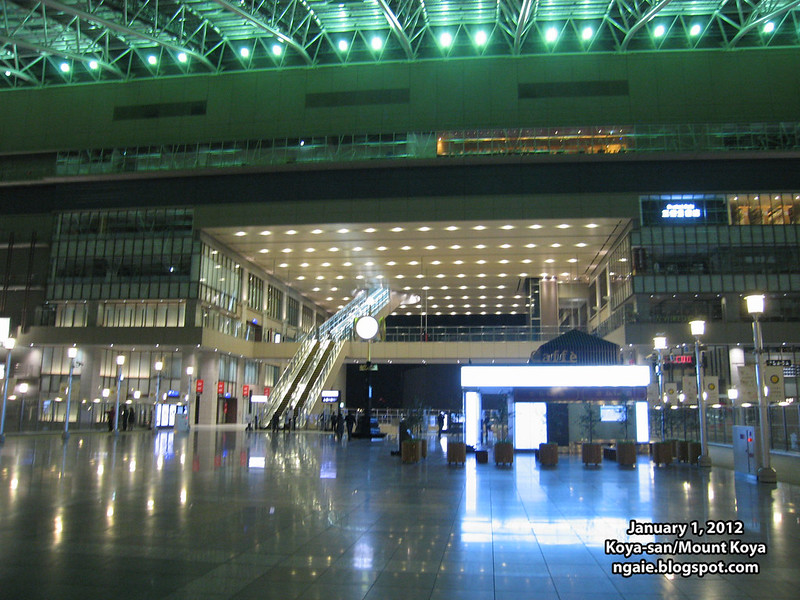

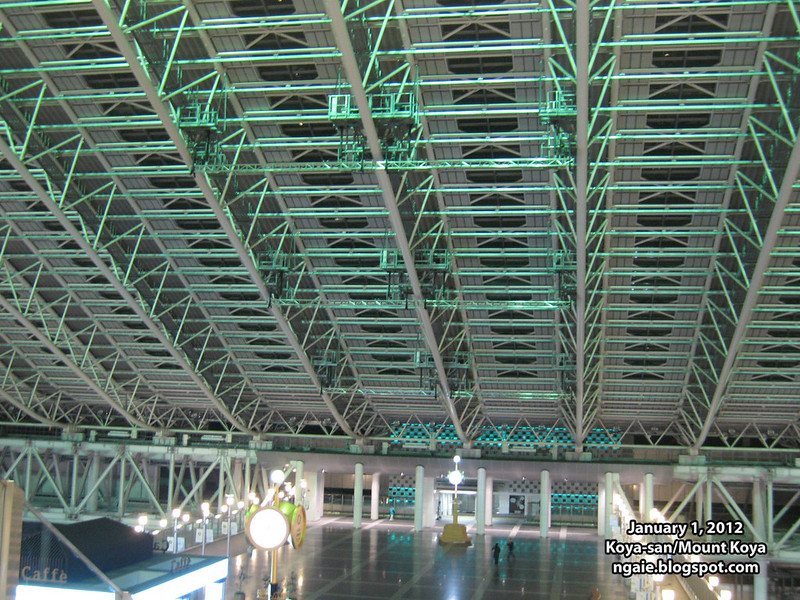
Going to the terrace.


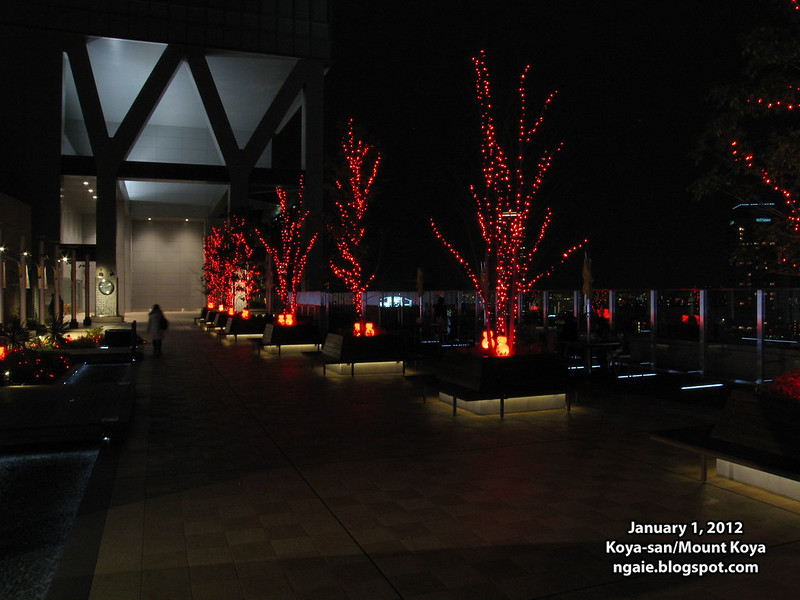
The Umeda Sky Building in the background.
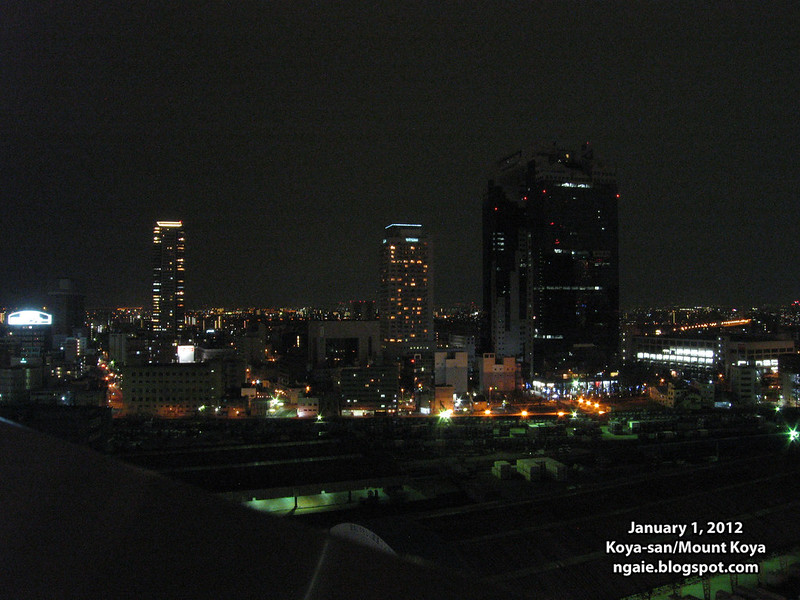
The bright and wide passageways to the train platforms.
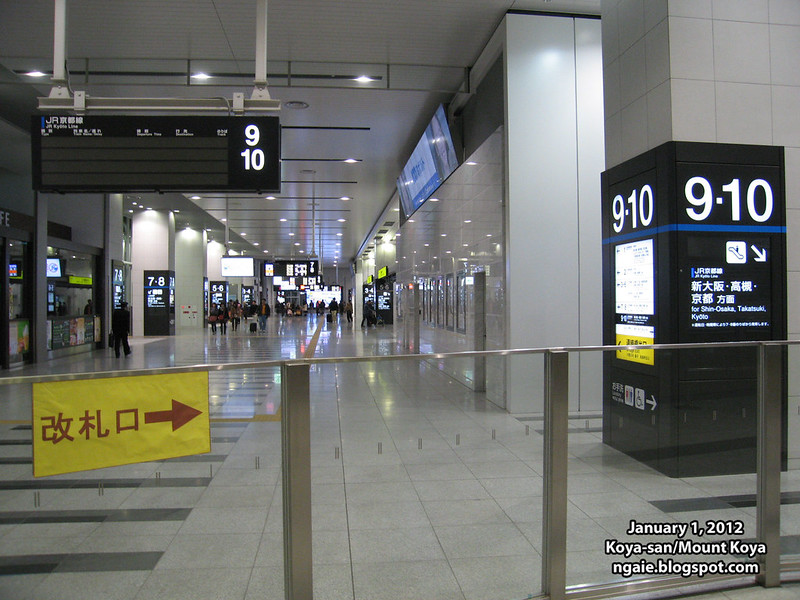
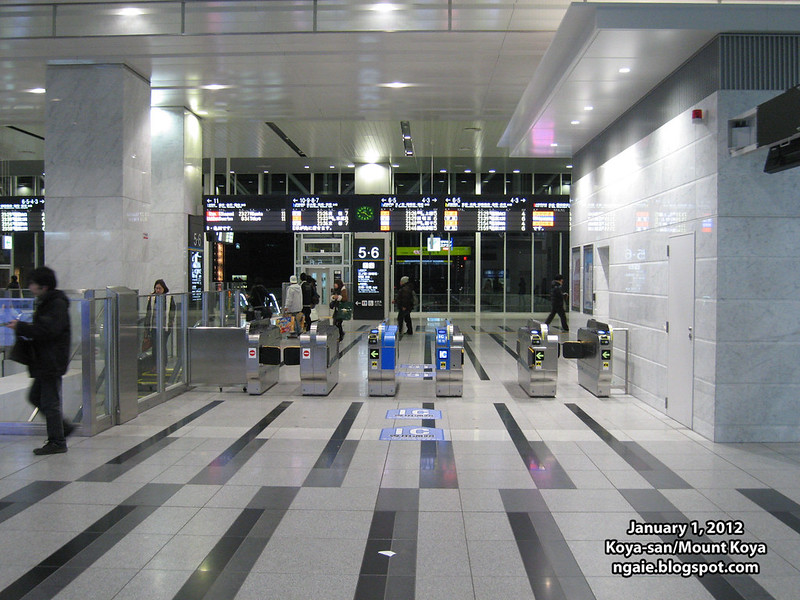
Looking up to the roof.

Too bad the giant roof was not built long enough, they still needed to use those ugly canopies to cover the rest of the train platforms.
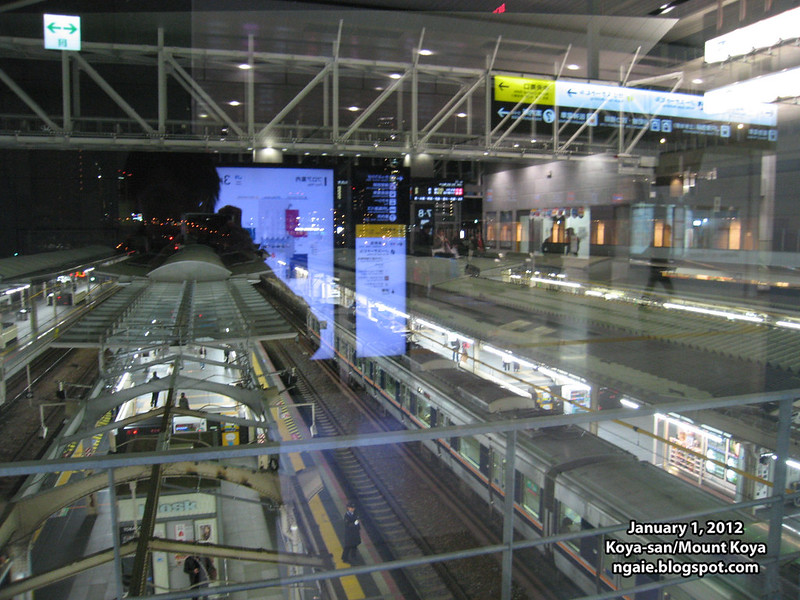
At the main entrance of Osaka station there was a large animated waterfall. Previously I had only see a smaller version of this in the Kintetsu Kyoto station.

2 comments:
Hi, I came across your blog about Koyasan on New Year's Day. We have been to Koyasan before back in November 2012. We are going to Japan again and will be in Osaka on the 30th December and make our way to Takayama on the 3rd January 2018. I am undecided whether to go to Koyasan on the 1st January as everywhere else will be shut on New Year's Day. In your opinion, is it worth going there on the 1st? You also mentioned that it was pretty much like a dead town when you arrived. Did you see any restaurants open at all?
Many thanks
Sabrina
Hi Sabrina,
Thanks for your comment. Actually the 1st of January is not a good time to be travelling in Japan because almost everything will be closed, even most shops and restaurants in Tokyo! Although everything will be closed, like restaurants, I reckon that there might be many people visiting the shrines and temples on Koya-san on the 1st. So, it is hard to say. It might be inconvenient for travelling purposes.
The New Year's holiday is the one time of the year when most people can take a long holiday in Japan and therefore some shops may be closed for the week before or following the 1st of January.
Post a Comment